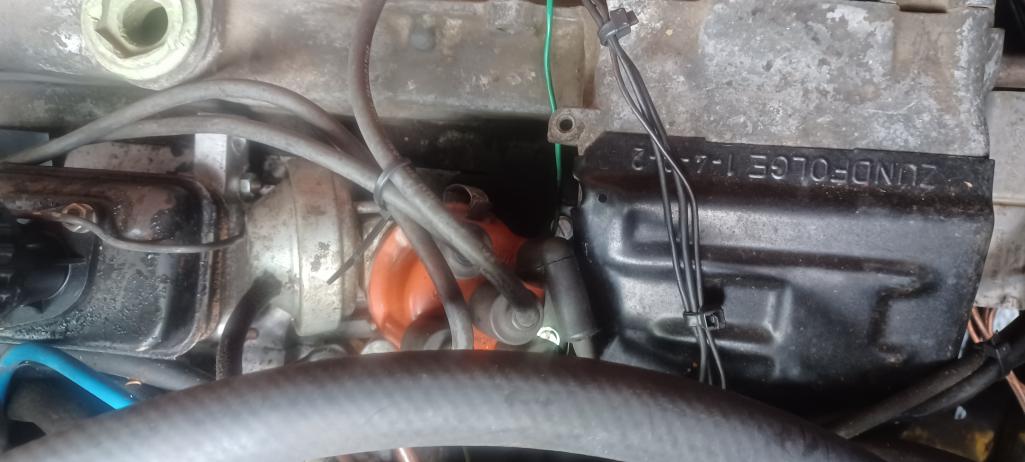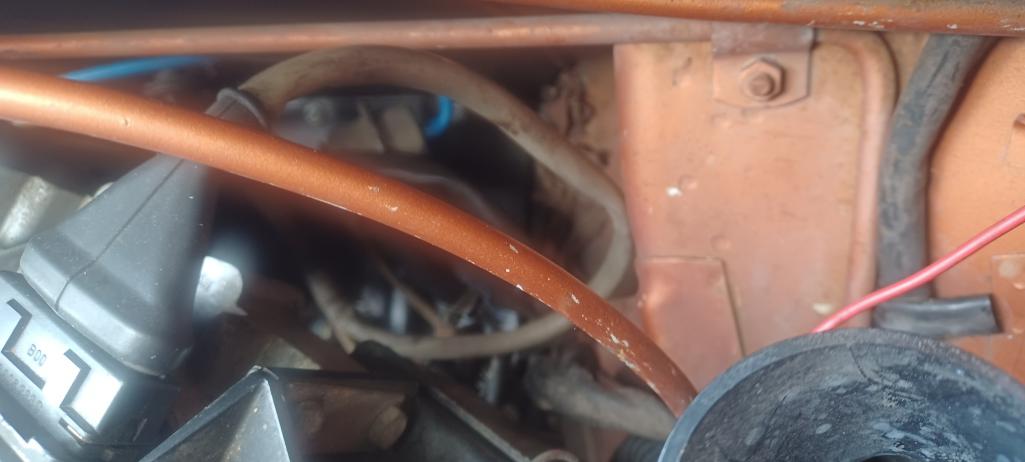|
|

|
Porsche, and the Porsche crest are registered trademarks of Dr. Ing. h.c. F. Porsche AG.
This site is not affiliated with Porsche in any way. Its only purpose is to provide an online forum for car enthusiasts. All other trademarks are property of their respective owners. |
|
|
  |
| 914rrr |
 Jul 16 2025, 04:04 PM Jul 16 2025, 04:04 PM
Post
#1
|
|
Senior Member    Group: Members Posts: 1,927 Joined: 1-July 03 From: Knoxville, TN Member No.: 874 Region Association: South East States |
I've been stocking up on hose diagrams to help sort out my non-smog 75 1.8 L-Jet engine bay hoses. There also seems to be some discussions as to whose vacuum hose diagrams are the correct-est. (IMG:style_emoticons/default/smile.gif)
BTW, I do have the charcoal canister and bracket. I snapped a few pics of my engine bay and methinks there's a bunch wrong with the vacuum hoses in there. Any input, as always, is much appreciated. 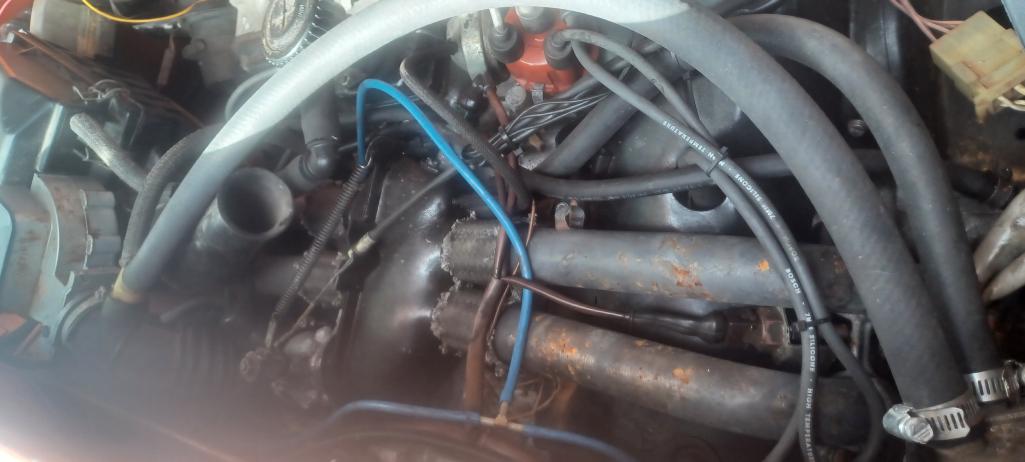 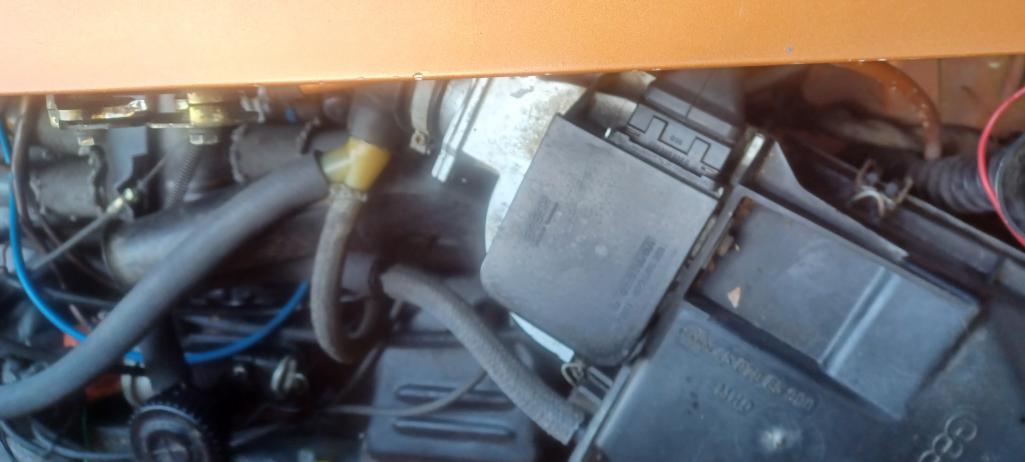 |
| 914rrr |
 Jul 16 2025, 04:09 PM Jul 16 2025, 04:09 PM
Post
#2
|
|
Senior Member    Group: Members Posts: 1,927 Joined: 1-July 03 From: Knoxville, TN Member No.: 874 Region Association: South East States |
|
| JeffBowlsby |
 Jul 16 2025, 05:37 PM Jul 16 2025, 05:37 PM
Post
#3
|
|
914 Wiring Harnesses & Beekeeper      Group: Members Posts: 8,982 Joined: 7-January 03 From: San Ramon CA Member No.: 104 Region Association: None 
|
|
| 914rrr |
 Jul 17 2025, 12:38 AM Jul 17 2025, 12:38 AM
Post
#4
|
|
Senior Member    Group: Members Posts: 1,927 Joined: 1-July 03 From: Knoxville, TN Member No.: 874 Region Association: South East States |
Is this the thread you're referring to ? http://www.914world.com/bbs2/index.php?showtopic=351159 For starters, I don't have any hose connected to the retard side of the distributor at this point, and the hose from the oil filler goes straight to the air filter. Q: What does the hard tubing that goes to the gas tank evaporative chamber look like and where does it pass through the body on both ends? At first glance I don't see anything like a hard tube on either end. My main motivation is to significantly reduce or eliminate any "gas smells" coming from my 914 so my mom will let me park it in her garage. (IMG:style_emoticons/default/smile.gif) |
| wonkipop |
 Jul 17 2025, 09:21 PM Jul 17 2025, 09:21 PM
Post
#5
|
|
Advanced Member     Group: Members Posts: 4,854 Joined: 6-May 20 From: north antarctica Member No.: 24,231 Region Association: NineFourteenerVille 
|
Is this the thread you're referring to ? http://www.914world.com/bbs2/index.php?showtopic=351159 For starters, I don't have any hose connected to the retard side of the distributor at this point, and the hose from the oil filler goes straight to the air filter. Q: What does the hard tubing that goes to the gas tank evaporative chamber look like and where does it pass through the body on both ends? At first glance I don't see anything like a hard tube on either end. My main motivation is to significantly reduce or eliminate any "gas smells" coming from my 914 so my mom will let me park it in her garage. (IMG:style_emoticons/default/smile.gif) no. the diagrams are in this topic. see towards bottom of page. http://www.914world.com/bbs2/index.php?sho...57407&st=40 so far i have only done the hose diagrams for the 74 1.8s. ------ you have a 75 1.8. the 49 state 75 1.8s had a hose set up virtually identical to the 74 EC-A engine cars (caifornia). there were very minor differences that were to do with hose couplings and a different design decel valve. buts that all. you can use the EC-A diagram in the link above. the 75 1.8s had the evap charcoal can in the engine bay. it was in a different position than the engine bay cans on the 74. instead mounted off side of battery tray. the hose hook up is as per the engine bay cans on the 74. the only hose leading back to the fuel tank is the small diameter fume hose and it runs through the central tunnel of the car. there are no hoses in the side sills behind the rocker panel on the 74 cars from late Nov 73 onward and the 75 cars. to note - there has been some discussion about the correct way to connect those hoses to the charcoal can. it has been established that VW and Porsche altered and revised the plumbing of the hoses to the canister when they moved it to the engine bay location. this is not speculation - it is supported by the emissions warranty diagrams that were originally provided with the cars along with the owners operating manual. (IMG:style_emoticons/default/beerchug.gif) EDIT - if you have a 75 1.8 (California). it has an EGR. but it sounds like yours does not have that emissions gear on it. if it did and you needed to know how it worked i could probably do a quick sketch. (IMG:style_emoticons/default/beerchug.gif) |
| fiacra |
 Jul 17 2025, 09:54 PM Jul 17 2025, 09:54 PM
Post
#6
|
|
Person.Woman.Man.Camera.TV    Group: Members Posts: 583 Joined: 1-March 19 From: East Bay Region - California Member No.: 22,920 Region Association: Northern California 
|
If you are interested here are the diagrams from the 1975 Emissions Control System maintenance and warranty booklet for MY 1975 1.8. I'll also attach the full booklet in pdf format in case anyone wants to download it.
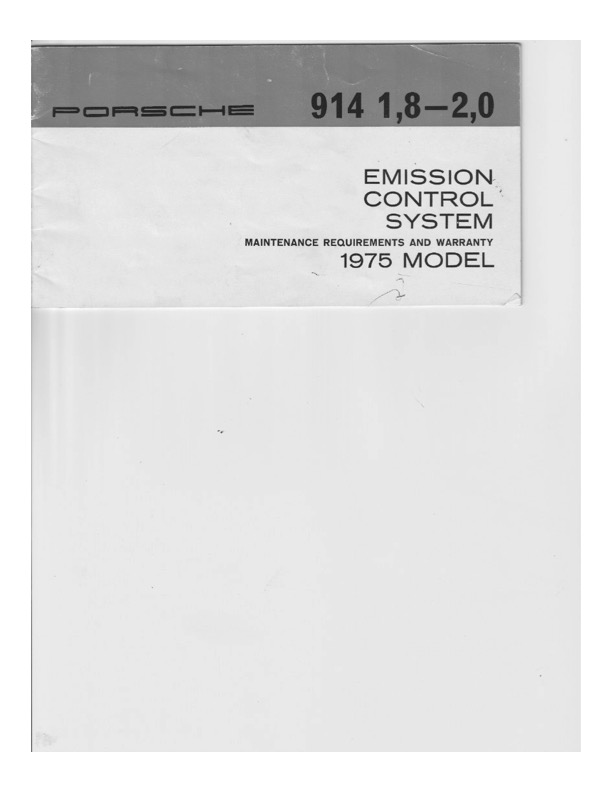 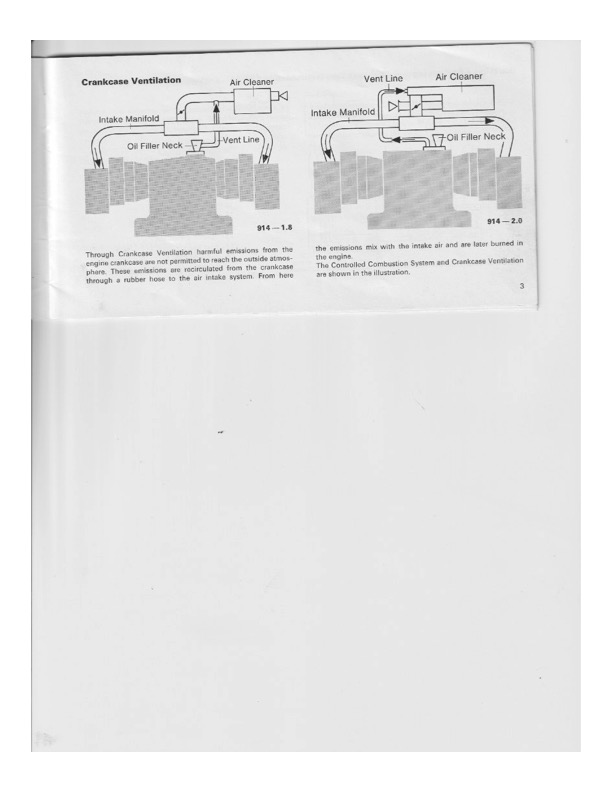 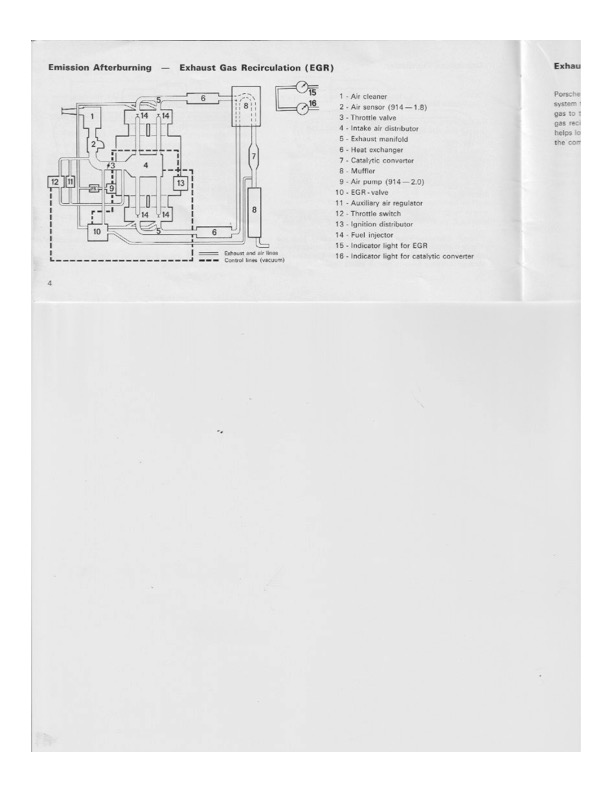 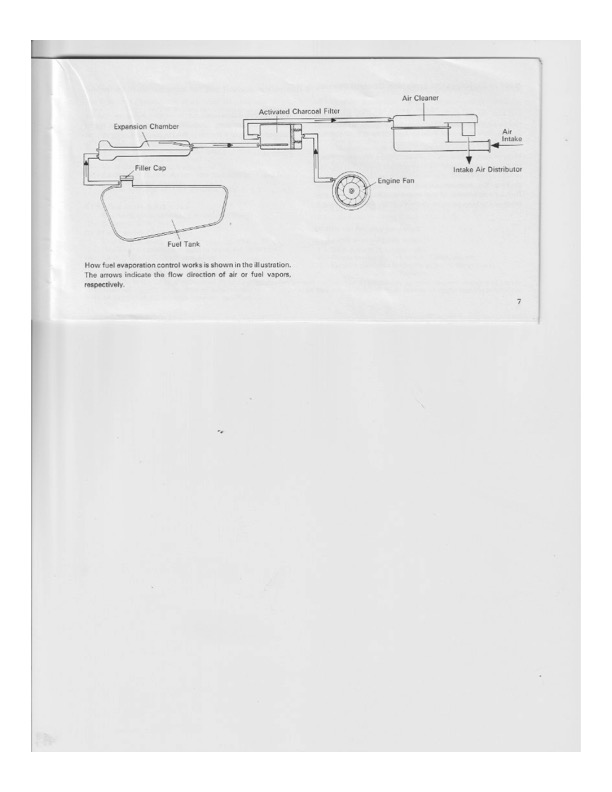  1975_Emissions_Control_System.pdf ( 2.15mb )
Number of downloads: 146
1975_Emissions_Control_System.pdf ( 2.15mb )
Number of downloads: 146 |
| wonkipop |
 Jul 17 2025, 11:07 PM Jul 17 2025, 11:07 PM
Post
#7
|
|
Advanced Member     Group: Members Posts: 4,854 Joined: 6-May 20 From: north antarctica Member No.: 24,231 Region Association: NineFourteenerVille 
|
evap can and hose connection plumbing for 75 1.8.
(this is also a good view of a 75 49 states engine bay - no EGR - all in pretty much original state). 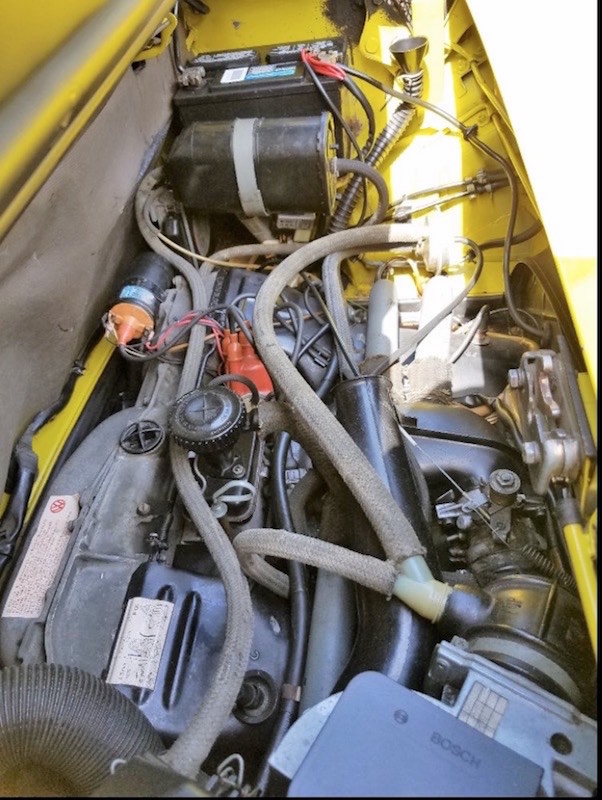 |
| ClayPerrine |
 Jul 18 2025, 05:27 AM Jul 18 2025, 05:27 AM
Post
#8
|
|
Life's been good to me so far.....                Group: Admin Posts: 16,487 Joined: 11-September 03 From: Hurst, TX. Member No.: 1,143 Region Association: NineFourteenerVille 
|
They moved the charcoal canister sometime during the 1974 run, so the late 74s have the canister in the engine bay.
|
| Geezer914 |
 Jul 18 2025, 05:31 AM Jul 18 2025, 05:31 AM
Post
#9
|
|
Geezer914     Group: Members Posts: 2,026 Joined: 18-March 09 From: Salem, NJ Member No.: 10,179 Region Association: North East States 
|
L jet. The only hoses I have are the oil fill to the throttle body S hose. A hose from the S hose to the auxiliary air valve, and a vacuum line from the throttle body to the fuel pressure regulator. Everything else has been eliminated.
|
| wonkipop |
 Jul 18 2025, 07:22 AM Jul 18 2025, 07:22 AM
Post
#10
|
|
Advanced Member     Group: Members Posts: 4,854 Joined: 6-May 20 From: north antarctica Member No.: 24,231 Region Association: NineFourteenerVille 
|
They moved the charcoal canister sometime during the 1974 run, so the late 74s have the canister in the engine bay. there were 3 weeks of L jets from around about oct 30 to nov 20 1973 with the can in the frunk. after that its in the engine bay. aug 73 to oct 30 73 it seems to be only 2.0s were produced. all with frunk can. then L Jet 1.8 starts production right at the end of october 73 -- and for about 3 weeks is produced with frunk can. (IMG:style_emoticons/default/beerchug.gif) |
| lkeigwin |
 Jul 19 2025, 09:07 AM Jul 19 2025, 09:07 AM
Post
#11
|
|
Newbie  Group: Members Posts: 6 Joined: 23-March 13 From: Cape Cod Member No.: 15,687 Region Association: None |
Wonkipop, I also have a 1975 L jet 1.8 that runs well. Some PO replaced the battery tray with what I think is a Porsche part, but my charcoal cannister lacks the ~1 inch strap for mounting and I don's see exactly how it is meant to be mounted. That is, how does the strap connect to something solid?
Also, my cannister is mounted the reverse of what you show. Since the can is not symmetrical, it makes me think one end must be inlet and the other outlet. There are no markings on the can to indicate this, but on my 944 one of the ports is clearly labeled both "ein" and "in." Pretty unambiguous. |
| wonkipop |
 Jul 19 2025, 03:22 PM Jul 19 2025, 03:22 PM
Post
#12
|
|
Advanced Member     Group: Members Posts: 4,854 Joined: 6-May 20 From: north antarctica Member No.: 24,231 Region Association: NineFourteenerVille 
|
Wonkipop, I also have a 1975 L jet 1.8 that runs well. Some PO replaced the battery tray with what I think is a Porsche part, but my charcoal cannister lacks the ~1 inch strap for mounting and I don's see exactly how it is meant to be mounted. That is, how does the strap connect to something solid? Also, my cannister is mounted the reverse of what you show. Since the can is not symmetrical, it makes me think one end must be inlet and the other outlet. There are no markings on the can to indicate this, but on my 944 one of the ports is clearly labeled both "ein" and "in." Pretty unambiguous. i have never seen a 75 in person up close. or i did but it was 35 years ago and i can't remember. (IMG:style_emoticons/default/biggrin.gif) (IMG:style_emoticons/default/biggrin.gif) just pictures of one. i only know my 74s. there is a little formed dent up along the top edge of the firewall between the engine compartment and the rear trunk that is on the 74s when they began to get the engine bay can. and as far as i know it stayed there in the 75s even though they started mounting the can off the battery tray. i reckon the reason they shifted the can in 75 was on account of the EGR in the california models. the EGR was all in the area where the can used to hang. its an alternative location you could use in a 75 given the EGR was not there anyway on 75 49 state models. the plumbing and mounting for the can is shown correctly in the photo i posted. it matches a photo i have seen in a tech bulletin from back at the time the model was introduced. a lot of them got changed around during routine work on cars etc over the years. and some got replumbed the wrong way around by well meaning owners using the earlier frunk mounted can plumbing scheme. (IMG:style_emoticons/default/beerchug.gif) as to in and out printed on the plastic can. i'll have to have a look at mine. its a plastic can as per 75. and its plumbed correctly. the idea of the hose from the cooling fan port is not so much to push the fumes through the can as most folks think. its to flood the can with air (oxygen). the charcoal releases the hydrocarbons when bathed in oxygen. the engine actually draws the released fumes in under simple suction or draw through the throttle when its running. dumb as that. there is no valve to seal the whole thing off from the atmosphere. it simply relies on the amount of charcoal in the can to act as an absorber before any fumes can escape. the route for escape if it occurs is via the fan port supply hose. thats why the fan hose is at the opposite end of the can from the small fume hose from the tank and the engine draw hose into the air cleaner. its the standard design and layout for all VWs from around 1970 on for the USA market. only the earlier 914s up to nov 73 manufacture differed. they used a porsche design layout for the hose connections. i suspect the reason for this was to accomodate the 914/6 and is heavy fume load from carburettors. and it was simply also used on the 4s despite the fume load from fuel injection being very very small. what is interesting is that when porsche went over to fuel injection on all its 911 models in around 74 they also revised the hose connections to be identical to the normal VW layout. the 914/4 from 70 to early 74 is the only VW engined car that had the exceptional fume hose layout with its frunk mounted can. in that layout the draw hose to the air cleaner was the one at the opposite end of the can from the small diam fume line and the fan bleed hose. the draw hose and the fan bleed hose are flipped compared to the 74/75 cars. |
| wonkipop |
 Jul 19 2025, 04:52 PM Jul 19 2025, 04:52 PM
Post
#13
|
|
Advanced Member     Group: Members Posts: 4,854 Joined: 6-May 20 From: north antarctica Member No.: 24,231 Region Association: NineFourteenerVille 
|
Wonkipop, I also have a 1975 L jet 1.8 that runs well. Some PO replaced the battery tray with what I think is a Porsche part, but my charcoal cannister lacks the ~1 inch strap for mounting and I don's see exactly how it is meant to be mounted. That is, how does the strap connect to something solid? Also, my cannister is mounted the reverse of what you show. Since the can is not symmetrical, it makes me think one end must be inlet and the other outlet. There are no markings on the can to indicate this, but on my 944 one of the ports is clearly labeled both "ein" and "in." Pretty unambiguous. had a pic on file from L jet research of mount for battery area can in 75 L jet. you could make your own support strap out of formed sheet steel if you have the tools lying around to cut a strip of steel. looks like it just bolts to the battery tray in standard battery clamp bolt location. 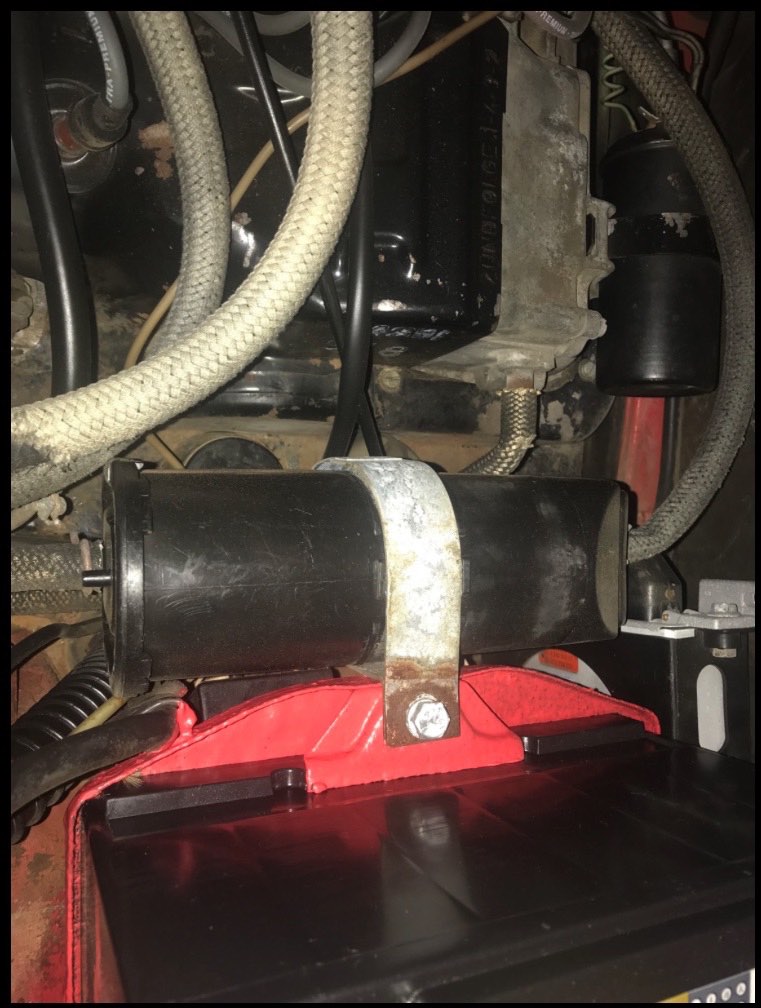 (IMG:style_emoticons/default/beerchug.gif) |
| 914rrr |
 Jul 19 2025, 07:11 PM Jul 19 2025, 07:11 PM
Post
#14
|
|
Senior Member    Group: Members Posts: 1,927 Joined: 1-July 03 From: Knoxville, TN Member No.: 874 Region Association: South East States |
Is this the thread you're referring to ? http://www.914world.com/bbs2/index.php?showtopic=351159 For starters, I don't have any hose connected to the retard side of the distributor at this point, and the hose from the oil filler goes straight to the air filter. Q: What does the hard tubing that goes to the gas tank evaporative chamber look like and where does it pass through the body on both ends? At first glance I don't see anything like a hard tube on either end. My main motivation is to significantly reduce or eliminate any "gas smells" coming from my 914 so my mom will let me park it in her garage. (IMG:style_emoticons/default/smile.gif) no. the diagrams are in this topic. see towards bottom of page. http://www.914world.com/bbs2/index.php?sho...57407&st=40 so far i have only done the hose diagrams for the 74 1.8s. ------ you have a 75 1.8. the 49 state 75 1.8s had a hose set up virtually identical to the 74 EC-A engine cars (caifornia). there were very minor differences that were to do with hose couplings and a different design decel valve. buts that all. you can use the EC-A diagram in the link above. the 75 1.8s had the evap charcoal can in the engine bay. it was in a different position than the engine bay cans on the 74. instead mounted off side of battery tray. the hose hook up is as per the engine bay cans on the 74. the only hose leading back to the fuel tank is the small diameter fume hose and it runs through the central tunnel of the car. there are no hoses in the side sills behind the rocker panel on the 74 cars from late Nov 73 onward and the 75 cars. to note - there has been some discussion about the correct way to connect those hoses to the charcoal can. it has been established that VW and Porsche altered and revised the plumbing of the hoses to the canister when they moved it to the engine bay location. this is not speculation - it is supported by the emissions warranty diagrams that were originally provided with the cars along with the owners operating manual. (IMG:style_emoticons/default/beerchug.gif) EDIT - if you have a 75 1.8 (California). it has an EGR. but it sounds like yours does not have that emissions gear on it. if it did and you needed to know how it worked i could probably do a quick sketch. (IMG:style_emoticons/default/beerchug.gif) Thanks for all your work drawing those diagrams! My 75 is a TX car, so thankfully no EGR. Q: Is the 74 and 75 (74 CA) that different? It was surprising to see the distributor vacuum line plugged on the 75 (74 CA) vs the 74. Why would they do that or does it really make any difference? Also, can the charcoal cannister small line be plugged until I get the evap line connected? 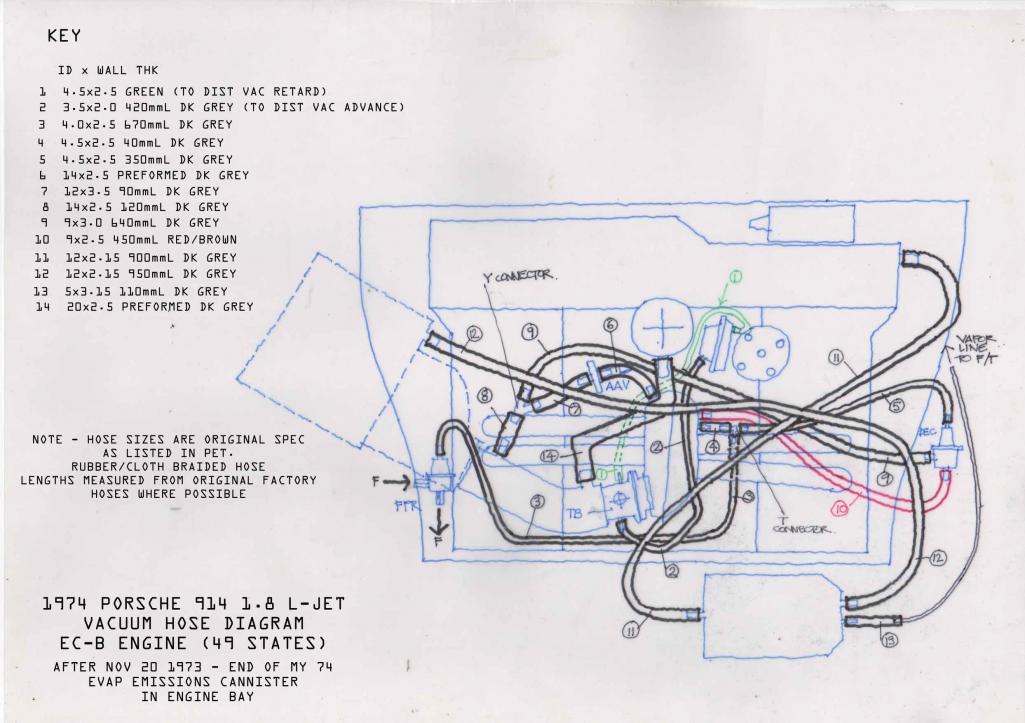 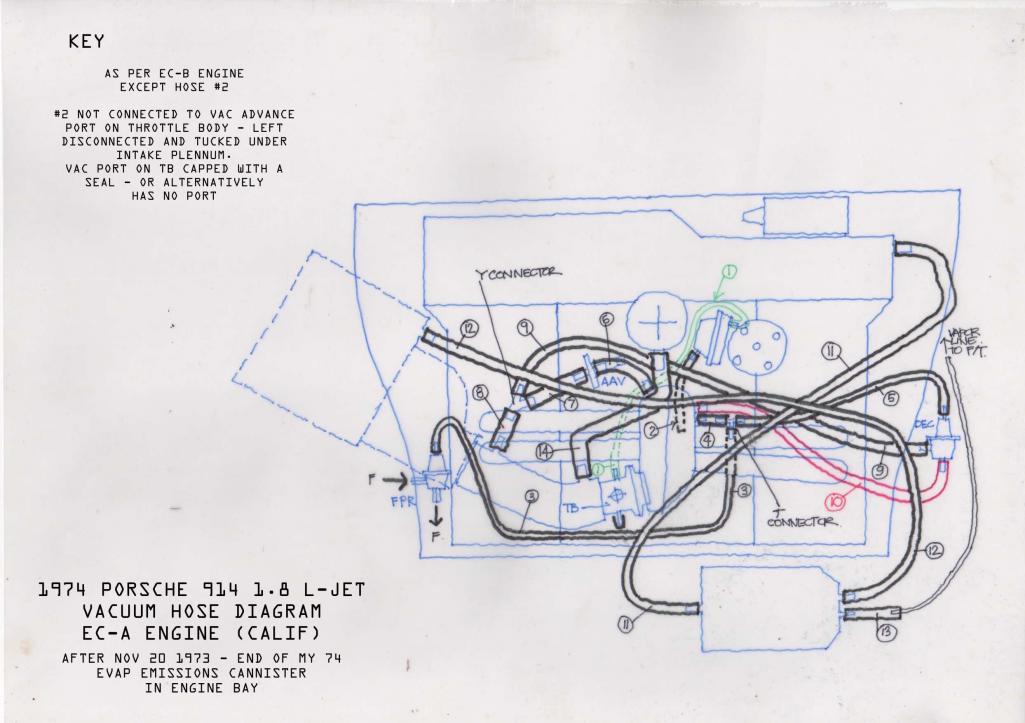 |
| wonkipop |
 Jul 19 2025, 09:06 PM Jul 19 2025, 09:06 PM
Post
#15
|
|
Advanced Member     Group: Members Posts: 4,854 Joined: 6-May 20 From: north antarctica Member No.: 24,231 Region Association: NineFourteenerVille 
|
@914rrr
"can the small fume line be plugged?" the fume line is how the fuel system ventilates. ie allows air in to relieve vacuum that would build in the tank as fuel is consumed. its via the charcoal cannister. works the other way too. if fuel expands in tank on hot day, pressure is relieved through the fume line and passes through cannister. hydro carbons are stripped off by the charcoal. don't plug the fume line. you will get five minutes down the road and the engine will cut out. fuel starved. (IMG:style_emoticons/default/biggrin.gif) (IMG:style_emoticons/default/beerchug.gif) "whats the difference between EC-B (49 states) and EC-A (california)? short answer. the B is better. but pollutes more. (IMG:style_emoticons/default/biggrin.gif) longer answer. VW long made use of a pure vacuum advance off the side of the distributor. single can. vac hose went to a port above the throttle plate in the fuel injection but was also used in the carb cars same way. in fact was in the carb cars first. right through 60s. probably earlier even. reason - 2 really. the extra advance that he vac can provided on top of the pure mechanical (centrifugal) advance offered enhanced fuel economy. it also let the engine run slightly cooler. it only acted at steady state cruise. the port was above the throttle plate. this was beneficial to the little air cooled engines being hammered along on autobahns and highways at 100km/hr. you got to remember cruise in a beetle is basically flat out. and they were designed to drive flat out all day long. they did not go any faster. then- along came the EPA in the USA in 1970 and demanded emissions cleanups. and VW turned to the vac cans on distributors as a pretty major emissions device. they added another chamber to the opposite side which did the opposite. pulled the timing back to a retarded position. but only when vacuum acted. why do that. the retarded timing reduced NOX emissions. NOX is the main ingredient of photo chemical smog. initially were able t0 maintain a dual action with these double vac cans on the distributor. the retard only worked at idle. it ran from a port below the throttle body to the vac can retard side. the port above the throttle plate had no influence at idle. so you got pure retard. lowered NOX. but head temperatures were elevated. not a terrible thing as you were only sitting around at idle with this happening. say in a traffic jam. the intent was to lower emissions in urban areas where cars spent a lot of time in stop go driving. but out on the highway at cruise because the advance side of the can was much larger than the retard side the net effect when vacuum set in was an advance effect. the advance side of can is hooked up to port above throttle plate. so a cruise with part throttle (plate partly open) you get a higher vacuum in the intake plenum throttle body and it induces advance over the upper limit of the mechanical advance. so you get the old advantages VW had through the 60s and earlier. cooler running (lower head temps) and increased fuel economy. but...............then came the stricter standards. first in california in 74, then USA wide in 75. VW dealt with it by disconnecting the hose to the upper throttle body port and capping the port. they left the hose on the vac can and just tucked it under the intake plenum. this meant there was atmospheric pressure in the advance can and to some extent dirt and dust was kept out of the distributor can. it also meant the car reduced NOX emissions at cruise now but as a negative ran hotter with elevated head temps. also fuel economy suffered. it was being slightly retarded now at cruise as well as idle. in both cases as soon as you snapped open the throttle seriously. like to take off at the lights or gas it at cruise the vac effects came off instantly and the retard effect stop. so the engine did not hesitate, you had full power available. clever little analogue device when its all working properly. to some extent the californian 75 1.8s made up for this because they were fitted with EGR. which was not necessarily a bad thing. EGR lowered the head temps again and also had a very small effect on fuel economy that was positive. however it added a great deal more expense to the exhaust system and engine equipment. not as cheap as a hose from a distributor can to a throttle body port. (IMG:style_emoticons/default/biggrin.gif) (IMG:style_emoticons/default/biggrin.gif) the EGR was operated by the port above the throttle plate. it only really kicked in at cruise in the EC engine in the 75 914. i hope that explains it. (IMG:style_emoticons/default/smile.gif) i think i have most of that description right. i don't see why a 75 1.8 would not work well plumbed up like a 74 1.8 (49 states). if the port is available on the throttle body. thats the port above the throttle plate. i believe that 75 1.8 (49 state) cars originally came with a throttle body that deleted this port. it only had the lower port that connected to the retard can on the distributor with a green hose. but if the port is there on the throttle body i'd give it a go. its a different ECU on the 75 to the 74. and its a different decel valve. but hooking up vac advance might just work on a 75. it took me a while to get my head around the double vac cans on the 914s. VWs down here never had them. just single action vac cans on the vws here. the dual action cans are in fact the major emissions device on the 914s during that era of the early 70s. the ECU did the other bit by more accurately delivering the right amount of fuel to reduce unburnt hydrocarbons. of course you can also probably delete the whole vac can set up for a purely mechanical distributor. do away with any advance at cruise or retard at idle. a lot of people do these days with beetles. very hard to find the original distributors anyway. so they just put pure mechanical distributors on. (IMG:style_emoticons/default/beerchug.gif) |
| wonkipop |
 Jul 19 2025, 09:29 PM Jul 19 2025, 09:29 PM
Post
#16
|
|
Advanced Member     Group: Members Posts: 4,854 Joined: 6-May 20 From: north antarctica Member No.: 24,231 Region Association: NineFourteenerVille 
|
extra.
as to why a 74 49 states was required to be different to a 74 californian. and then same again in 75. all part of EPA history. california was granted the right to introduce air standards one year in advance of the rest of the USA. that happened way back in 68 or 69. LA air pollution was once legendary the world over. its been that way ever since. california gets the standards first, the rest of USA follows with same standards the year after. happened the whole way through. from unleaded fuel to the introduction of cats and onwards. the US automakers also agreed with the Nixon administration to do it this way as it divided their manufacturing output into two almost halfs. a lot of cars were sold in calif. this was going to be especially important to the introduction of exhaust cats back then. ----- if you think about it, and you knew what you were doing, which some L Jet tech experts very well might have known, you could easily hook up your EC-A in california to run on advance like an EC-B then just before you had to go in for a smog test you could unplug it again. in 74 they just capped the throttle body port with a rubber plug. (IMG:style_emoticons/default/biggrin.gif) i still remember getting a smog test on my 914 in chicago back in 89 or 90. i was required to run it at idle. they measured. then i had to rev iit to about 2500 or 3000 and hold it there. they measured again. thats all they were interested in. emissions at idle and emissions at elevated idle (Ie cruise). and thats what the 74 emissions certification more or less was. god knows how dirty the cars were when you really give them gas, despite the emissions gear on all of them. it was what they put out the tailpipe at those two conditions pretty much. there was a bit more detail to it, but not much more. of course this kind of connect and disconnect caper would have been punishable by death in california probably. tampering with an emissions device. (IMG:style_emoticons/default/smile.gif) but i am sure those in the know knew they could do it. all lost in the sands of time from half a century ago. (IMG:style_emoticons/default/beerchug.gif) |
| 914rrr |
 Jul 20 2025, 07:11 AM Jul 20 2025, 07:11 AM
Post
#17
|
|
Senior Member    Group: Members Posts: 1,927 Joined: 1-July 03 From: Knoxville, TN Member No.: 874 Region Association: South East States |
@914rrr "can the small fume line be plugged?" the fume line is how the fuel system ventilates. ie allows air in to relieve vacuum that would build in the tank as fuel is consumed. its via the charcoal cannister. works the other way too. if fuel expands in tank on hot day, pressure is relieved through the fume line and passes through cannister. hydro carbons are stripped off by the charcoal. don't plug the fume line. you will get five minutes down the road and the engine will cut out. fuel starved. (IMG:style_emoticons/default/biggrin.gif) (IMG:style_emoticons/default/beerchug.gif) "whats the difference between EC-B (49 states) and EC-A (california)? short answer. the B is better. but pollutes more. (IMG:style_emoticons/default/biggrin.gif) longer answer. VW long made use of a pure vacuum advance off the side of the distributor. single can. vac hose went to a port above the throttle plate in the fuel injection but was also used in the carb cars same way. in fact was in the carb cars first. right through 60s. probably earlier even. reason - 2 really. the extra advance that he vac can provided on top of the pure mechanical (centrifugal) advance offered enhanced fuel economy. it also let the engine run slightly cooler. it only acted at steady state cruise. the port was above the throttle plate. this was beneficial to the little air cooled engines being hammered along on autobahns and highways at 100km/hr. you got to remember cruise in a beetle is basically flat out. and they were designed to drive flat out all day long. they did not go any faster. then- along came the EPA in the USA in 1970 and demanded emissions cleanups. and VW turned to the vac cans on distributors as a pretty major emissions device. they added another chamber to the opposite side which did the opposite. pulled the timing back to a retarded position. but only when vacuum acted. why do that. the retarded timing reduced NOX emissions. NOX is the main ingredient of photo chemical smog. initially were able t0 maintain a dual action with these double vac cans on the distributor. the retard only worked at idle. it ran from a port below the throttle body to the vac can retard side. the port above the throttle plate had no influence at idle. so you got pure retard. lowered NOX. but head temperatures were elevated. not a terrible thing as you were only sitting around at idle with this happening. say in a traffic jam. the intent was to lower emissions in urban areas where cars spent a lot of time in stop go driving. but out on the highway at cruise because the advance side of the can was much larger than the retard side the net effect when vacuum set in was an advance effect. the advance side of can is hooked up to port above throttle plate. so a cruise with part throttle (plate partly open) you get a higher vacuum in the intake plenum throttle body and it induces advance over the upper limit of the mechanical advance. so you get the old advantages VW had through the 60s and earlier. cooler running (lower head temps) and increased fuel economy. but...............then came the stricter standards. first in california in 74, then USA wide in 75. VW dealt with it by disconnecting the hose to the upper throttle body port and capping the port. they left the hose on the vac can and just tucked it under the intake plenum. this meant there was atmospheric pressure in the advance can and to some extent dirt and dust was kept out of the distributor can. it also meant the car reduced NOX emissions at cruise now but as a negative ran hotter with elevated head temps. also fuel economy suffered. it was being slightly retarded now at cruise as well as idle. in both cases as soon as you snapped open the throttle seriously. like to take off at the lights or gas it at cruise the vac effects came off instantly and the retard effect stop. so the engine did not hesitate, you had full power available. clever little analogue device when its all working properly. to some extent the californian 75 1.8s made up for this because they were fitted with EGR. which was not necessarily a bad thing. EGR lowered the head temps again and also had a very small effect on fuel economy that was positive. however it added a great deal more expense to the exhaust system and engine equipment. not as cheap as a hose from a distributor can to a throttle body port. (IMG:style_emoticons/default/biggrin.gif) (IMG:style_emoticons/default/biggrin.gif) the EGR was operated by the port above the throttle plate. it only really kicked in at cruise in the EC engine in the 75 914. i hope that explains it. (IMG:style_emoticons/default/smile.gif) i think i have most of that description right. i don't see why a 75 1.8 would not work well plumbed up like a 74 1.8 (49 states). if the port is available on the throttle body. thats the port above the throttle plate. i believe that 75 1.8 (49 state) cars originally came with a throttle body that deleted this port. it only had the lower port that connected to the retard can on the distributor with a green hose. but if the port is there on the throttle body i'd give it a go. its a different ECU on the 75 to the 74. and its a different decel valve. but hooking up vac advance might just work on a 75. it took me a while to get my head around the double vac cans on the 914s. VWs down here never had them. just single action vac cans on the vws here. the dual action cans are in fact the major emissions device on the 914s during that era of the early 70s. the ECU did the other bit by more accurately delivering the right amount of fuel to reduce unburnt hydrocarbons. of course you can also probably delete the whole vac can set up for a purely mechanical distributor. do away with any advance at cruise or retard at idle. a lot of people do these days with beetles. very hard to find the original distributors anyway. so they just put pure mechanical distributors on. (IMG:style_emoticons/default/beerchug.gif) That was an amazing explanation. Thank You! That does lead to another question regarding centrifugal advance (non -vacuum advance) distributors. IIRC from my air cooled VW days, using a centrifugal advance dizzy in a stock carbed 1600 bug felt a bit "peppier" but usually had a "flat spot" under acceleration that was almost impossible to adjust out. Would I experience similar hesitation in a FI 1.8 914 application? |
| 914rrr |
 Jul 20 2025, 07:15 AM Jul 20 2025, 07:15 AM
Post
#18
|
|
Senior Member    Group: Members Posts: 1,927 Joined: 1-July 03 From: Knoxville, TN Member No.: 874 Region Association: South East States |
Thanks to all that replied, offered advice, added pics, etc.! This community is an amazing resource!
|
| 914rrr |
 Jul 20 2025, 07:43 AM Jul 20 2025, 07:43 AM
Post
#19
|
|
Senior Member    Group: Members Posts: 1,927 Joined: 1-July 03 From: Knoxville, TN Member No.: 874 Region Association: South East States |
extra. as to why a 74 49 states was required to be different to a 74 californian. and then same again in 75. all part of EPA history. california was granted the right to introduce air standards one year in advance of the rest of the USA. that happened way back in 68 or 69. LA air pollution was once legendary the world over. its been that way ever since. california gets the standards first, the rest of USA follows with same standards the year after. happened the whole way through. from unleaded fuel to the introduction of cats and onwards. the US automakers also agreed with the Nixon administration to do it this way as it divided their manufacturing output into two almost halfs. a lot of cars were sold in calif. this was going to be especially important to the introduction of exhaust cats back then. ----- if you think about it, and you knew what you were doing, which some L Jet tech experts very well might have known, you could easily hook up your EC-A in california to run on advance like an EC-B then just before you had to go in for a smog test you could unplug it again. in 74 they just capped the throttle body port with a rubber plug. (IMG:style_emoticons/default/biggrin.gif) i still remember getting a smog test on my 914 in chicago back in 89 or 90. i was required to run it at idle. they measured. then i had to rev iit to about 2500 or 3000 and hold it there. they measured again. thats all they were interested in. emissions at idle and emissions at elevated idle (Ie cruise). and thats what the 74 emissions certification more or less was. god knows how dirty the cars were when you really give them gas, despite the emissions gear on all of them. it was what they put out the tailpipe at those two conditions pretty much. there was a bit more detail to it, but not much more. of course this kind of connect and disconnect caper would have been punishable by death in california probably. tampering with an emissions device. (IMG:style_emoticons/default/smile.gif) but i am sure those in the know knew they could do it. all lost in the sands of time from half a century ago. (IMG:style_emoticons/default/beerchug.gif) Q: if i don't have the 2nd port on the throttle body, is it better to use the one port I do have for the dizzy advance hose? If so, should the retard port on the dizzy be left open or capped? I'm not concerned about emission "correctness" per year, I'd just like it to run better and cooler. |
| wonkipop |
 Jul 20 2025, 04:56 PM Jul 20 2025, 04:56 PM
Post
#20
|
|
Advanced Member     Group: Members Posts: 4,854 Joined: 6-May 20 From: north antarctica Member No.: 24,231 Region Association: NineFourteenerVille 
|
extra. as to why a 74 49 states was required to be different to a 74 californian. and then same again in 75. all part of EPA history. california was granted the right to introduce air standards one year in advance of the rest of the USA. that happened way back in 68 or 69. LA air pollution was once legendary the world over. its been that way ever since. california gets the standards first, the rest of USA follows with same standards the year after. happened the whole way through. from unleaded fuel to the introduction of cats and onwards. the US automakers also agreed with the Nixon administration to do it this way as it divided their manufacturing output into two almost halfs. a lot of cars were sold in calif. this was going to be especially important to the introduction of exhaust cats back then. ----- if you think about it, and you knew what you were doing, which some L Jet tech experts very well might have known, you could easily hook up your EC-A in california to run on advance like an EC-B then just before you had to go in for a smog test you could unplug it again. in 74 they just capped the throttle body port with a rubber plug. (IMG:style_emoticons/default/biggrin.gif) i still remember getting a smog test on my 914 in chicago back in 89 or 90. i was required to run it at idle. they measured. then i had to rev iit to about 2500 or 3000 and hold it there. they measured again. thats all they were interested in. emissions at idle and emissions at elevated idle (Ie cruise). and thats what the 74 emissions certification more or less was. god knows how dirty the cars were when you really give them gas, despite the emissions gear on all of them. it was what they put out the tailpipe at those two conditions pretty much. there was a bit more detail to it, but not much more. of course this kind of connect and disconnect caper would have been punishable by death in california probably. tampering with an emissions device. (IMG:style_emoticons/default/smile.gif) but i am sure those in the know knew they could do it. all lost in the sands of time from half a century ago. (IMG:style_emoticons/default/beerchug.gif) Q: if i don't have the 2nd port on the throttle body, is it better to use the one port I do have for the dizzy advance hose? If so, should the retard port on the dizzy be left open or capped? I'm not concerned about emission "correctness" per year, I'd just like it to run better and cooler. interesting question. i think this would happen if you use the port below the throttle plate connected to the advance side can. your timing would be advanced by vacuum at idle. so when you set the idle at around 900-950 rpm with the idle screw its influenced by that advanced timing then i think what would happen is when you open the throttle the vac would instantly snap off. and your revs might first want to dip below that 900 idle setting. and you might in fact get a hesitation from the engine before it picks up. might not transition smoothly from idle to powering away. or it might even die before it gets a chance to throttle up. you could try it and see. i've never done it, nor would i as i am pretty sure above would happen (IMG:style_emoticons/default/biggrin.gif) if i did not have the port on the throttle body and i was after the set up the original 74 49 state car had i would either see if i could get hold of a 74 tb with the port or, if i felt confident and had the set up with tools modify the 75 tb to have the port. it could be done, the shoulder in the casting is there on the throttle body without the port. all they did back then was not drill out the tb and fit the tube to take the vac hose. 75 1.8 california cars do have a tb with the advance port. its just they used it for an egr. but you could easily hook up the advance hose instead. a 75 california tb is basically the same as a 74 49 states tb. its got a different part number but is just the result of them changing the tb slightly as an update, not because its fundamentally different in some way. in the meantime just hook up the hoses as per stock until you can get the two port tb. all it means is your car runs slightly hotter at idle and cruise. the vac cans have no effect at other times. the engines run identical under throttle whether californian or 49. or as another alternative disconnect all the vac hoses and plug the port left on the tb. have no vac influence - just run it on mech advance. see what it goes like. probably be fine. ------ i was aware of the old flat spot problem with the single carb beetles. i don't believe it had anything to do with the vac advance on distributor. it was the carby. one word. solex. i had a 1600 type 3 variant back in my younger days. didn't have the flat spot like the beetles. twin carbies. both solex. it had multiplle flat spots. that depended on the weather that day. (IMG:style_emoticons/default/biggrin.gif) (IMG:style_emoticons/default/biggrin.gif) |
  |
1 User(s) are reading this topic (1 Guests and 0 Anonymous Users)
0 Members:

|
Lo-Fi Version | Time is now: 30th July 2025 - 03:15 PM |
Invision Power Board
v9.1.4 © 2025 IPS, Inc.








